What is a Stylophone?
The Stylophone is a handheld electronic musical instrument invented by Brian Jarvis in the late 1960s. It gained popularity in the 1970s with the help of musicians like David Bowie, who used it in his hit song “Space Oddity.” The instrument features a metal keyboard with a stylus, which is used to produce sounds by touching the keys.
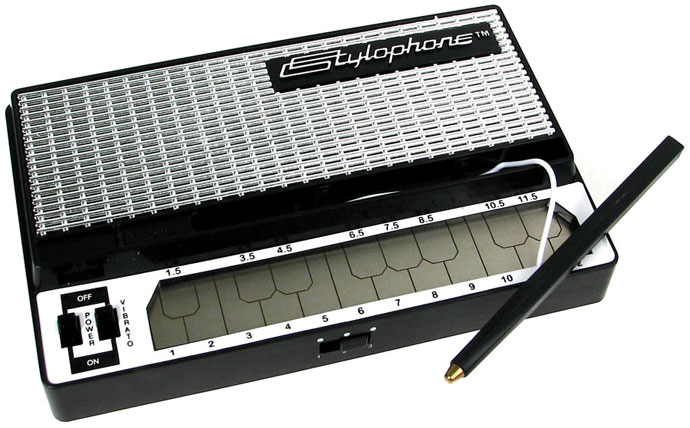
How does the Stylophone work?
The Stylophone works by using a combination of analog electronics and basic sound synthesis principles. When the stylus is pressed onto a key, it completes an electrical circuit, allowing current to flow through a resistor. The resistance value determines the pitch of the sound produced. The Stylophone also features a built-in oscillator, amplifier, and speaker to generate and amplify the sound.
What are the key features of a Stylophone?
Stylophones come in various models, but most share common features. These include:
- Keyboard: The keyboard consists of a series of metal keys that are played using the stylus. The number of keys varies across different models, ranging from 20 to 44.
- Vibrato: Many Stylophones have a vibrato function that adds a modulating effect to the sound, creating a wavering or trembling quality.
- Headphone/output jack: This allows you to connect the Stylophone to external speakers, amplifiers, or headphones for a better listening experience or integration into a music production setup.
- Tone control: Some models offer tone control options to adjust the overall timbre or EQ of the sound generated by the Stylophone.
Can the Stylophone produce a wide range of sounds?
The Stylophone is known for its distinctive sound, which is often characterized as a mix of a theremin and a synthesizer. While it has its unique sonic palette, the range of sounds it can produce is somewhat limited compared to more advanced synthesizers. However, by experimenting with techniques such as changing the pressure applied to the keys, using the vibrato function, and utilizing external effects, it is possible to achieve a broader range of timbres and tones.
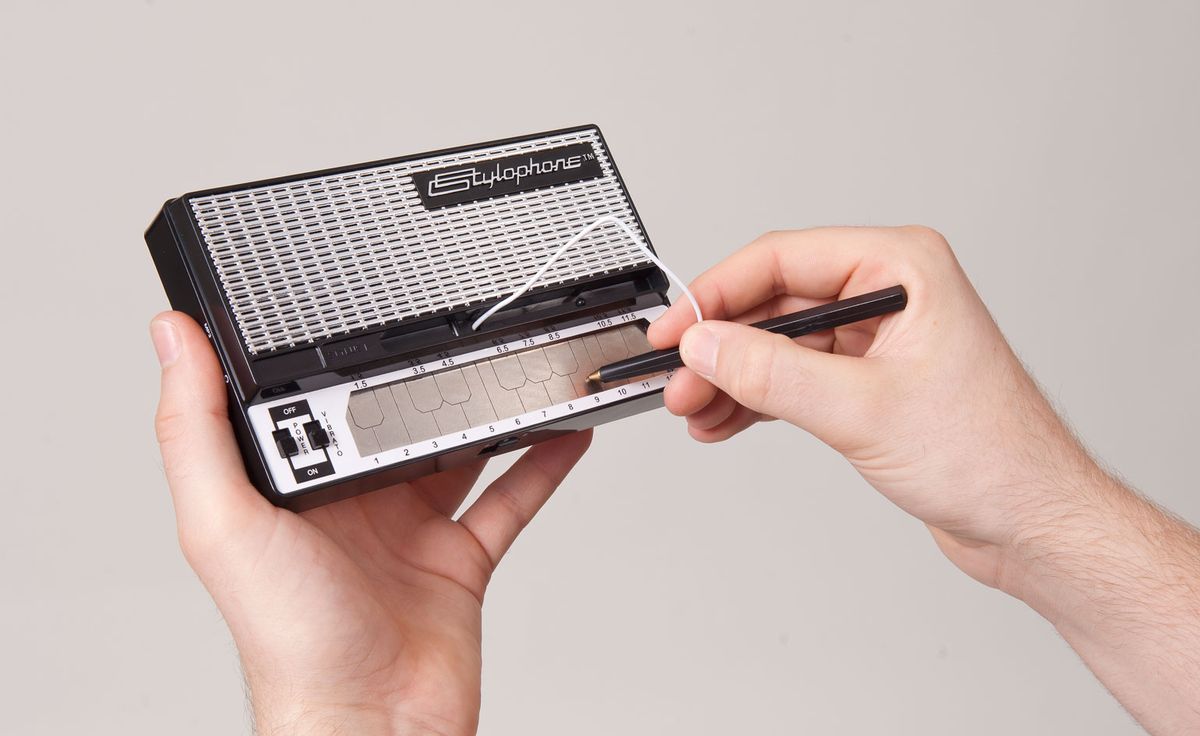
How can I integrate the Stylophone into my music production setup?
The Stylophone can be a valuable addition to your music production setup. Here are a few ways to integrate it:
- Recording: Connect the Stylophone’s output to your audio interface and record its sound directly into your DAW (Digital Audio Workstation). This allows you to layer it with other instruments or process it with effects.
- MIDI Control: Some modern Stylophone models offer MIDI connectivity. You can connect it to your computer or MIDI-compatible devices to use it as a MIDI controller, triggering software synthesizers or virtual instruments.
- Performance: Use the Stylophone during live performances by connecting it to a mixer, amplifier, or PA system. Its portability and unique sound makeit a captivating instrument to showcase in your live shows.
- Sound Design: Experiment with the Stylophone’s sound to create unique textures and effects. Layer it with other synthesizers or process its sound through effects pedals or software plugins to add depth and complexity to your compositions.
- Collaborations: Collaborate with other musicians or producers by incorporating the Stylophone into your collaborative projects. Its distinct sound can add an interesting and unexpected element to your collaborative compositions.
Can I use the Stylophone with headphones?
Yes, you can use the Stylophone with headphones by connecting them to the audio output jack. This allows for private practice and prevents sound from being audible to others. It’s a convenient feature for playing and experimenting with the instrument without disturbing those around you.
Is the Stylophone suitable for beginners?
The Stylophone is indeed suitable for beginners. Its simple design and layout make it easy to learn and play. The keys are laid out in a linear fashion, and the built-in notes guide helps players find the correct pitches. It’s a great starting point for learning basic music concepts and developing finger coordination.
Can I connect the Stylophone to external effects pedals?
Although the Stylophone doesn’t have a dedicated input for external effects pedals, it’s possible to connect it to such pedals using an adapter or audio interface. This allows you to experiment with different effects and modify the sound of the Stylophone. It can add versatility and creativity to your playing, expanding the sonic possibilities of the instrument.
Are there different versions or models of the Stylophone available?
Yes, there are different versions and models of the Stylophone available. The original Stylophone was invented in the 1960s and has since undergone various revisions and updates. These include the Stylophone S1, Stylophone Gen X-1, and Stylophone S2, each offering different features and enhancements while retaining the core functionality and unique sound of the instrument.
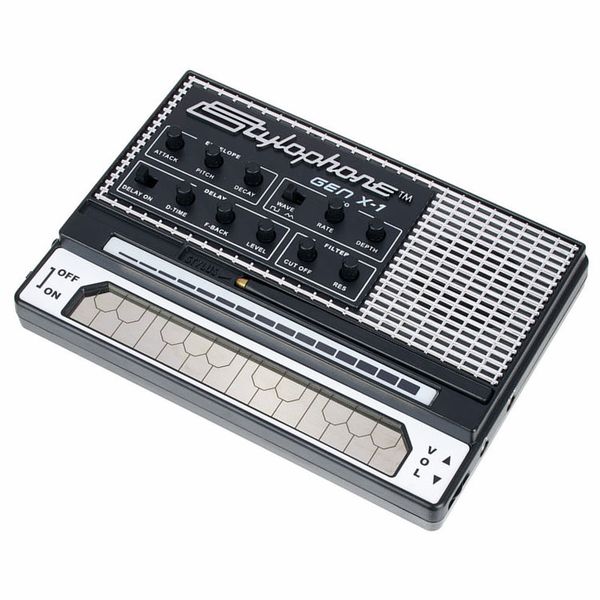
Can I use the Stylophone in a live band setup?
The Stylophone can indeed be used in a live band setup. While it may not be a primary instrument in most bands, it can serve as a unique and distinctive addition to the overall sound. Its compact size and portability make it convenient to incorporate into a live performance, allowing for creative melodies and solos that stand out in the mix.
Does the Stylophone require batteries?
Yes, the Stylophone typically requires batteries for operation. Most models of the Stylophone are powered by standard AA batteries, which are easily replaceable. However, some newer models may have rechargeable battery options or even USB power capabilities for added convenience.
Can you connect a Stylophone to a computer?
Yes, you can connect a Stylophone to a computer. Many models offer a line-out or headphone output that can be connected to the computer’s audio input using an appropriate cable or adapter. This allows you to record the Stylophone’s sound directly into your computer, enabling you to capture and manipulate your performances using recording software or digital audio workstations.
Does a Stylophone need an amp?
No, a Stylophone does not necessarily need an amplifier (amp). It has a built-in speaker that produces sound when played. However, if you want to amplify the Stylophone’s sound for live performances or recording, you can connect it to an external amplifier or audio interface. This allows for greater volume control and the option to apply effects or process the sound further.
Conclusion
The Stylophone sound synthesis offers a unique and captivating musical experience. With its portable design, distinct sound, and versatile features, it has become a popular choice among musicians and enthusiasts. In this article, we have explored some frequently asked questions about the Stylophone, providing comprehensive answers to help you understand its functionality, features, and integration possibilities in music production setups.
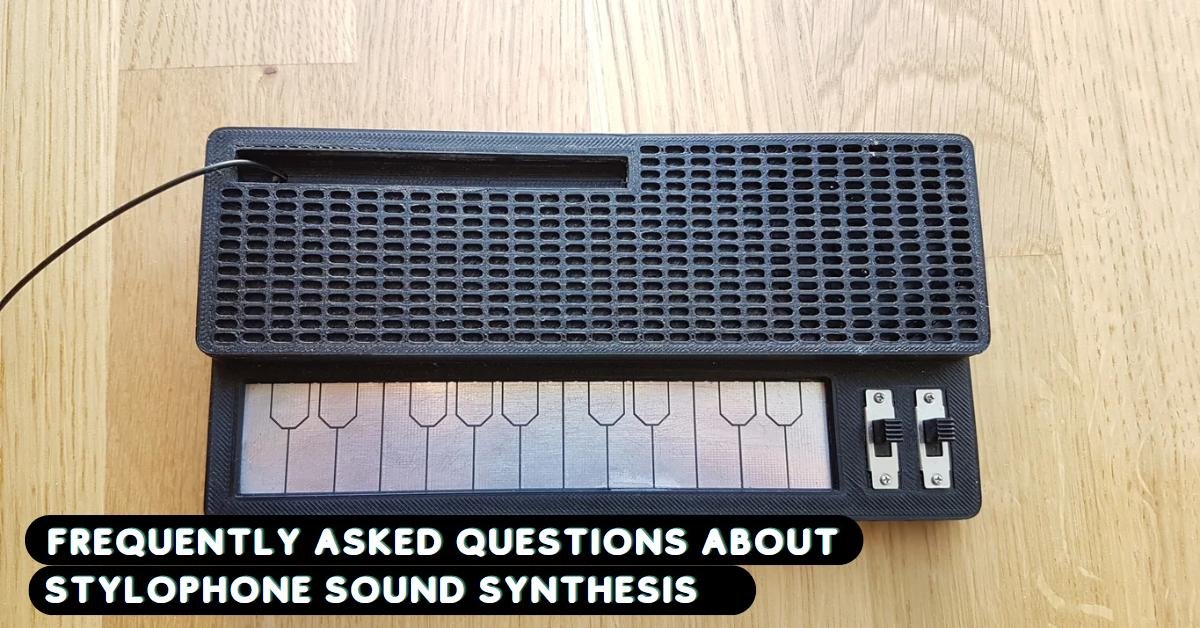

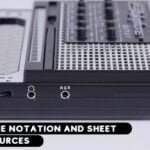
[…] Stylophone‘s unique sound and easy playability make it an excellent tool for creating soundtracks. […]